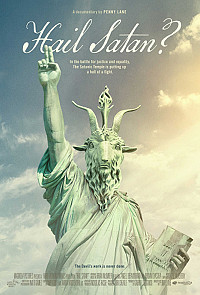| SHADOWS ON THE WALL | REVIEWS | NEWS | FESTIVAL | AWARDS | Q&A | ABOUT | TALKBACK | |||||||||||||||||||||||||||||
 Shadows off the beaten path Shadows off the beaten pathIndies, foreign, docs, revivals and shorts...
On this page:
HAIL SATAN? |
JONATHAN AGASSI SAVED MY LIFE |
VARDA BY AGNES
| |||||||||||||||||||||||||||||
| See also: SHADOWS FILM FESTIVAL | Last update 27.Jul.19 | |||||||||||||||||||||||||||||
|
Hail Satan? Review by Rich Cline | 

| 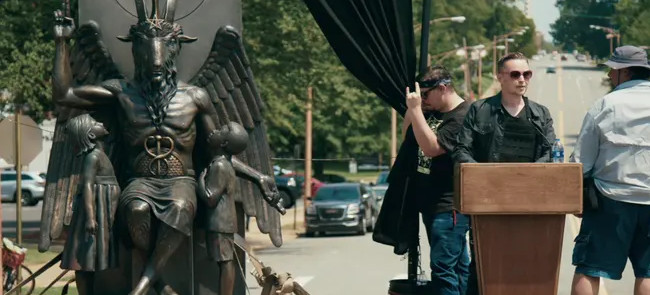 Important note: satanists in this amusing documentary aren't worshipping the devil; they are dedicated to improving the world by disrupting pious hypocrites and unjust governments. Filmmaker Penny Lane takes a wry approach that reveals them as normal people who simply felt they needed to stand up against corrupt organised religion by invoking the most shocking name possible. The Satanic Temple is an activist group formed in 2013 by Greaves and Jarry, based on the idea of rebelling against arbitrary authority. They don't believe in a literal devil, instead holding seven tenets that compel them to be empathetic as they fight for justice based on the inviolability of the body and freedom of belief: acknowledging science, recognising innate fallibility and inspiring compassion, wisdom and justice. They're not against Christianity; they're against those who use Christianity as a tool of oppression. One of their first protests was against the installation of a Ten Commandments monument outside a state capitol, demanding that a statue of goat-demon Baphomet is also installed on constitutional grounds. It worked: the Ten Commandments were removed. Bookending this doc with two of these campaigns provides narrative momentum, vividly seen in the group's fast growth from three people to more than 50,000 members in chapters around the world. The film includes fly-on-the-wall segments, to-camera interviews and archive clips edited together in a way that cleverly catches the good humour of a group that enjoys laughing at themselves and at the fact that others take them so seriously. These ironies are scattered through the film, as their accusers are clearly far more hateful than they are. And by simply using the word "satan", they stoke astonishingly levels of superstitious fear, even though they only use the word's literal meaning: adversary. So it's doubtful that most on the religious right will bother to see what this group actually stands for. Their tenets are actually more Christian than those of big churches who are trashing the US Constitution by creating a theocracy. The doc's most telling segment is its tracing of the historical roots of America as a "Christian nation", which didn't begin with the founding fathers. It was actually part of the Red Scare of the 1950s, as "In God We Trust" was added to US currency, "under God" was inserted into the Pledge of Allegiance and Cecil B DeMille created the Ten Commandments monuments used by state capitols as a movie tie-in stunt. And it's another irony that it has taken a group of satanists to proclaim the truth.
|
| Jonathan Agassi Saved My Life Review by Rich Cline | 
| 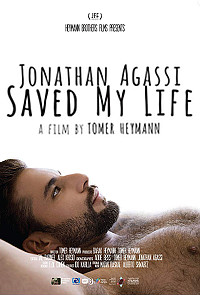 dir-scr Tomer Heymann prd Barak Heymann, Tomer Heymann with Jonathan Agassi, Anna Langer, Raviv Langer, Lior Sinay, Shahaf Langer, Tomer Heymann release Isr 30.Aug.18, UK Mar.19 flare, US Jul.19 off 18/Israel 1h46   
|  Unapologetic and more than a little disturbing, this graphic documentary follows a porn star through his life, capturing amusingly awkward moments with his family along with the sex shows and harrowing drug trips. With this unvarnished portrait, filmmaker Tomer Heymann takes the audience right into a day-to-day life most would find difficult to imagine. The approach is both intimate and dispassionate, which kind of leaves the viewer's head spinning. When he began doing porn, Jonathan Langer became Jonathan Agassi (the title is his own quote). Charming and likeable, he's a hairy, tattooed muscle boy with magnetic looks and endless enthusiasm for sex. He splits his time between Tel Aviv, and Berlin. His life is a blur of explicit nightclub performances, modelling, film shoots and escort work. He's genuinely sweet, but is usually wasted on drugs. So when he says he wants to be a top porn star for the rest of his life, he's clearly heading for a fall. The camera follows Jonathan between Israel, where he lives with his mother Anna, and Germany, where his estranged father Raviv is. He's a huge star in the gay porn world, which allows him to behave like a diva. He's remarkably honest about all of this with his mother, although when he shows her his new film, he skips the sex scenes. But he tries on provocative outfits for her to critique (his brother and sister are more shocked). And long before the film reveals it, it's clear that he has a serious drug problem. Eventually the camera watches him down pills, snort cocaine, smoke meths and even shoot up, then unblinkingly records the awful results. It's rare to see a film take such a straightforward, unpreachy approach to this behaviour, showing a real person almost killing himself right on camera. The question perhaps is whether Heymann is exploiting Agassi's pain for cinematic reportage, or whether this unvarnished footage has a stronger impact than preaching would. Heymann is just as honest with the nudity, but shies away from actual sex. Part of what makes this such uncomfortable viewing is Agassi's affable presence, smiling and generous, still grappling with his troubled relationship with his father and a difficult childhood during which he was badly bullied for being too feminine in a macho society. It was escorting that led Agassi into drugs, not the porn industry, which sacked him when addiction compromised his work. The film doesn't mention it, but Agassi's drug use cost him his career, and he's now sober.
|
| Varda by Agnès Varda par Agnès Review by Rich Cline |  MUST MUST  SEE SEE
| 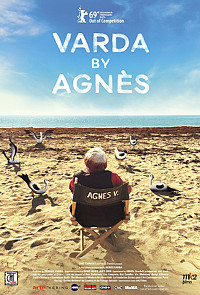 dir-scr Agnes Varda prd Rosalie Varda with Agnes Varda, Sandrine Bonnaire, JR, Herve Chandes, Nurith Aviv, Esther Levesque release Fr 18.Mar.19, UK 19.Jul.19 19/France 1h55 BERLIN FILM FEST See also: 

| 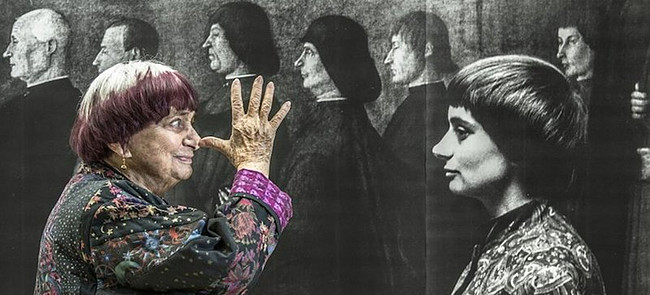 Completed two months before her death at age 90, the latest cinematic essay from the masterful Agnes Varda certainly doesn't disappoint. It's a look at cinema through her eyes, exploring ideas that sparked her work, techniques that brought them to life and the way she has presented art and interacted with her audience. For her, the three most important words are inspiration, creation and sharing. Varda started as a photographer before moving into filmmaking in the early 1950s, sparking the New Wave alongside husband Jacques Demy. This documentary is a filmed version of one of her lectures, playfully weaving in photos and clips as she chats on-stage, in various locations and, astonishingly, in seamlessly integrated archival footage. Even as scenes jump around, the film offers a remarkably fluid exploration of the concept of cinema. This includes Varda's early photographs and later museum installations, all of which are seen through her uniquely cheeky perspective. Varda also traces her career as a filmmaker from the 1950s to landmark films such as Cleo from 5 to 7 (1962) and Le Bonheur (1965), playfully offbeat work like Lions Love ... and Lies (1969) and Jane B for Agnes V (1988), and biographical films including Jacquot de Nantes (1991) and The Beaches of Agnes (2008). Some combine her passions for images with ordinary people, like Daguerreotypes (1976) and Faces Places (2017), while The Gleaners and I (2000) reveals her ongoing interest in recycling themes and materials in her art. And she invites Bonaire to revisit their groundbreaking road movie Vagabond (1985) together. Of course, this is fascinating for Varda fans, especially as it offers glimpses of unseen short films and unavailable features. And through it all, she holds the audience in the palm of her hand as she discusses the nature of cinema as filtered through her distinct point of view. Her observations are simple and powerful, always delivered with a playful glint and edited together with witty sense of irony. Her career is a wonderful collection of provocations, each conveyed with a warmly open-handed attitude. So it's fitting that this is her final film, summing up her approach to the variety of her life's work. From her knowing photographs of actors and filmmakers to museum pieces like her cinema shacks, constructed from recycled old prints of her movies, she forces the audience to look at both the world and cinema itself from new angles. And this documentary preserves her iconic talent for all time, an essential film school lecture that no one who loves the movies should miss.
| 
See also: SHADOWS FILM FESTIVAL © 2019 by Rich Cline, Shadows
on the Wall
HOME | REVIEWS | NEWS | FESTIVAL | AWARDS
| Q&A | ABOUT | TALKBACK | | ||||||||||||||||||
